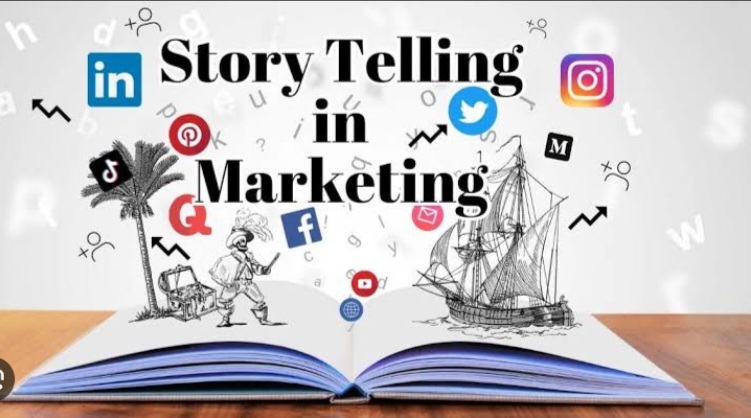Now Reading: The Art of Storytelling in Marketing: Connecting with Your Audience on an Emotional Level
-
01
The Art of Storytelling in Marketing: Connecting with Your Audience on an Emotional Level

The Art of Storytelling in Marketing: Connecting with Your Audience on an Emotional Level

Introduction
In the ever-evolving world of marketing, one timeless technique stands out as a cornerstone of successful brand communication – storytelling. The power of storytelling in marketing cannot be underestimated. It is a tool that not only conveys information but also engages the audience on a deep, emotional level. Brands that master this art have the potential to forge lasting connections with their customers, creating a bond that transcends the transactional relationship.
The Human Connection
At its core, storytelling is about human connection. We are inherently drawn to stories; they resonate with us on a fundamental level. From the tales we tell around campfires to the novels we read, stories have been an essential part of human culture for millennia. It’s no wonder that they are just as relevant in the modern marketing landscape.
Why Do Stories Work in Marketing?
Emotional Resonance: Stories tap into our emotions. They can make us laugh, cry, or feel a surge of excitement. Emotions are the key to memorable brand experiences. When people connect emotionally with a story, they are more likely to remember it and, by extension, the brand that tells it.
- Relatability: A well-told story often features characters, situations, or conflicts that resonate with the audience. This relatability makes the brand seem more human, and consumers find it easier to trust and support companies they can relate to.
- Differentiation: In a crowded marketplace, where countless products and services vie for attention, a compelling story can set a brand apart. It becomes a unique identifier that helps consumers remember and recognize the brand among the noise.
- Engagement: Stories are not passive; they require the audience’s participation. When a brand tells a story, it invites consumers to become part of the narrative. This engagement fosters a sense of involvement and connection.
- Retention: People tend to forget facts and figures, but they remember stories. This is why statistics presented in a narrative format are often more memorable and persuasive than plain data. Stories help information stick in the audience’s mind.
Components of Effective Brand Storytelling
- A Relatable Hero: In many stories, there is a hero who faces challenges and grows through the experience. In brand storytelling, the hero can be the customer or a character who represents the customer. The hero should be relatable and face challenges that the audience can empathise with.
- A Compelling Plot: A good story has a beginning, middle, and end. In marketing, this translates to introducing a problem (beginning), offering a solution (middle), and demonstrating the transformation or benefits (end) that result from using the product or service.
- Conflict and Resolution: Conflict is at the heart of any engaging story. In marketing, the conflict may be the challenges or pain points the customer faces, while the resolution is the brand’s product or service as the solution. Highlighting this transformation is crucial.
- Consistency: It’s essential for a brand’s story to align with its values and mission. The narrative should be consistent across all marketing channels and materials. Consistency fosters trust and reliability.
- Visual and Verbal Elements: Utilise both visual and verbal elements to enhance the storytelling experience. The use of images, videos, and written content should all work in harmony to convey the brand’s story.
Examples of Successful Brand Storytelling
- Nike: Nike’s “Just Do It” campaign is a prime example of powerful brand storytelling. It encourages people to overcome obstacles, push their limits, and achieve their goals. The stories featured in Nike’s campaigns often highlight real athletes’ struggles and triumphs.
- Apple: Apple’s brand story revolves around innovation, simplicity, and the human experience. Their commercials often highlight how their products make life easier, more enjoyable, or more productive.
- Coca-Cola: Coca-Cola has been telling heartwarming stories through its commercials for years. Whether it’s the tale of polar bears sharing a Coke or the “Share a Coke” campaign, these narratives emphasise the joy of sharing and connection.
The Impact of Storytelling in Marketing
When executed effectively, storytelling in marketing can have a profound impact on a brand’s success. It can result in increased brand loyalty, higher customer retention, and improved brand recognition. Furthermore, it can help differentiate a brand from its competitors and foster emotional connections that go beyond mere transactions.
Conclusion
In a world filled with marketing messages, stories have the potential to break through the noise and resonate with audiences. They create a lasting impression and evoke feelings that customers associate with the brand. The power of storytelling in marketing is undeniable, and it’s a tool that smart brands continue to harness to connect with their audience on a deep, emotional level. So, if you want your brand to stand out and connect with your customers on a deeper level, remember this age-old truth: Everyone loves a good story.












